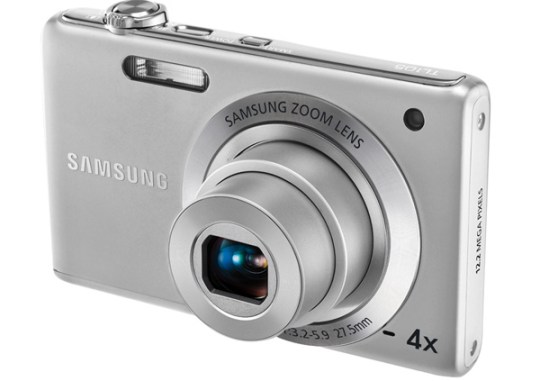
Samsung says it has the perfect “stylish, on-the-go camera for parties, family gatherings and other special moments,” and it’s super slim. At just 0.65 inches thin, the 14.2 megapixel TL110 and 12.2 megapixel TL105 are each equipped with a 2.7-inch LCD and feature a 5x optical zoom and a 4x optical zoom respectively. Samsung’s new models feature an improved 27mm wide-angle lens for TL110 and 27.5mm wide-angle lens for TL105. Samsung says the TL110 has a versatile 5x optical zoom, which is paired with Dual Image Stabilization (IS) to help reduce image blur, while the TL105 offers an expanded 4x optical zoom and features Digital Image Stabilization.

Both cameras support high-definition video recording and have the ability to record video at a resolution of 720p / 30fps, using H.264 compression. These two new, super-slim cameras will be available this February. The TL110 comes in cool metallic colors options of blue, orange, silver and a tradition (yet still shiny) black. The TL105 comes in standard black or silver.
Samsung also extended its popular SL-Series of digital cameras today with the new SL630. This 12.2 megapixel point-and-shoot offers unprecedented value for the casual shooter with a versatile 28mm wide-angle, 5x optical zoom lens, Dual Image Stabilization, and Samsung’s full range of smart features packed in a slim, compact frame.

Samsung claims the SL630 offers an exceptional 28mm wide-angle Samsung lens which provides users with a 5x optical zoom (28mm-140mm / 35mm equivalent), allowing the ability to capture more of a desired scene from farther away. Samsung SL630 also offers standard definition video recording at a resolution of 640×480 and recording at 30 frames-per-second, so you can switch from taking 12.2 megapixel digital stills to recording movies.
Last, but certainly not least, of Samsung’s new digital camera lineup is the addition of two new models to its HZ-Series of high zoom, point-and-shoot digital cameras. The 12-megapixel HZ35W and HZ30W offer the same wide-angle 24mm Schneider lenses as their predecessors, but extend the telephoto capability of the range from a 10x optical zoom to an impressive 15x optical zoom. Samsung says the HZ35W comes equipped with a super clear and sharp 3.0” AMOLED display and built-in GPS technology for the automatic geo-tagging of images from anywhere in the world.



